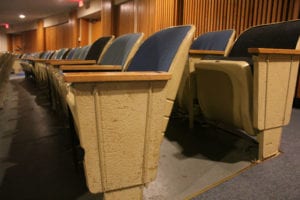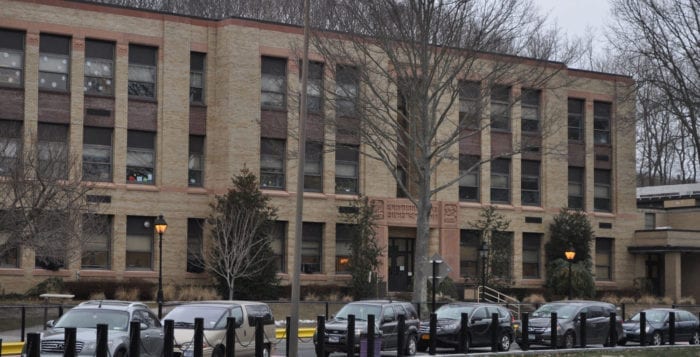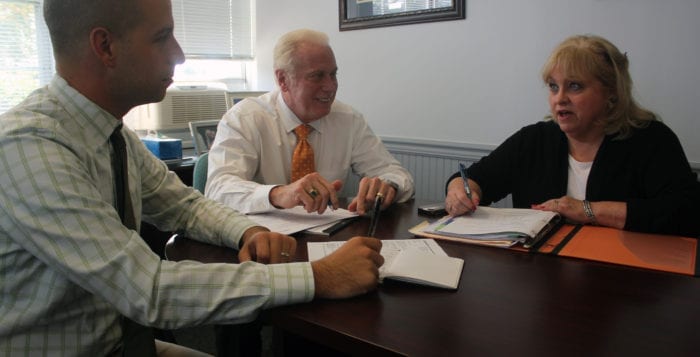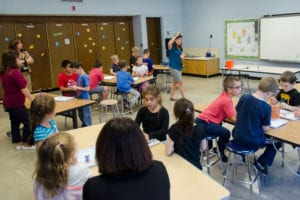Being named a National Blue Ribbon School by the U.S. Department of Education is an achievement that takes a village, but leaders in Port Jefferson School District attribute the designation to one confident, tough yet compassionate woman.
Christine Austen is in her third year as principal at Earl L. Vandermeulen High School. In that short period of time, according to her colleagues, she has imposed her strong will, ideas and work ethic on the school and is the person most responsible for the school being recognized on a national level in September with the Blue Ribbon honor.
“The award acknowledges and validates the hard work of students, educators, families and communities in striving for — and attaining — exemplary achievement,” the education department’s website says regarding qualifications for Blue Ribbon distinction. About 300 public schools nationwide were awarded in 2017.
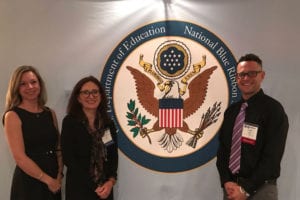
For helping to earn the prestigious award for Port Jeff and for her tireless efforts to improve the academic, social and emotional well being of all of her students, Times Beacon Record News Media named Austen a 2017 Person of the Year.
“The things that are happening at the high school among the staff, with the students, with the community, you can’t have those things happening without a principal who’s really moving it, is a big part of it, gets involved — she does not look at the clock,” Superintendent Paul Casciano said.
According to Jessica Schmettan, the district’s executive director of curriculum and instruction, Austen’s relentless commitment to analyzing the effectiveness of academic programs and initiatives, and examining results with a critical eye have created quantitative improvements in student performance since she became principal.
“She’s always attuned to the data to help push the academic limits forward, and we definitely see those quantitative results,” Schmettan said. The curriculum and instruction director pointed out Austen’s strengths as a principal are far from limited to fostering academic excellence though. “The principals I’ve worked with always demonstrated a clear strength — who was more of a social and emotional leader, who was more of an instructional leader, who focused more on the community. Everybody that I worked with demonstrated a strength in certain areas, where Chris I think embodies all of those things and that’s really unique.”
Austen and her husband Phil are each products of the Port Jefferson School District and community. She got her start working for the district as a librarian, and eventually served as a kindergarten-through-12th grade assistant principal for her first foray into the administration world. Despite competing against at least one other candidate with experience as a principal, Austen wowed the school board at her interview, which led to her earning the position.
“She came in the room, straightened her back, she sat in the chair and just emitted this confidence that, ‘I’m going to nail this, I’m going to give you my best answers,’” board of education President Kathleen Brennan said. Brennan said Austen’s confidence, without arrogance, stood out during her interview and has translated seamlessly into the position.
Many of her colleagues spoke about Austen’s knack for deftly walking the fine line between holding students accountable without being punitive, while always remaining positive and generally warm.
“If you’re working in this field, and she’s no exception, her ‘put the students first’ mentality is definitely a great strength,” Assistant Principal Kevin Bernier said.
Bernier shared a story about an incident that occurred during a pool party at a student’s home in 2016.

A student at the party, who frequently had seizures, was the only person in the pool at one point. Bernier said he noticed something was wrong with the student, and realized he might be having a full seizure in the pool at that moment.
“It only took a second,” Bernier recalled. “I said, ‘Is he OK?’ You saw something and he started to go down and before I even blinked my eyes, [Austen] was in the pool. If he went under he was going to take in water right away, and it was literally before I could even blink my eyes she was in the water.”
Bernier noted, Austen is far from an avid swimmer and the student was much taller than her, making the rescue no simple task.
“It took quite a bit of courage to dive into that pool,” said Edna Louise Spear Elementary School Principal Tom Meehan, who also was at the party.
Middle school Principal Robert Neidig, who started the same year as Austen, said he considers her a mentor. He said she’s great at giving one on one advice, but he also loves to hear her speak publicly because she strikes a perfect tone of humility and warmth accompanied with an unquestionable confidence that creates a perfect mixture for a leader.
“I couldn’t imagine doing the job without having her perspective,” he said.
Casciano summed up some firsthand observations he’s had since Austen took over at the high school.
“You’ll see her in the hallway putting her arm around a child,” he said. “She knows them and knows just from expressions on their faces, she could tell whether or not they’re having a good day, bad day. And if things look like they aren’t going well, she’ll engage the student and try to encourage them.”

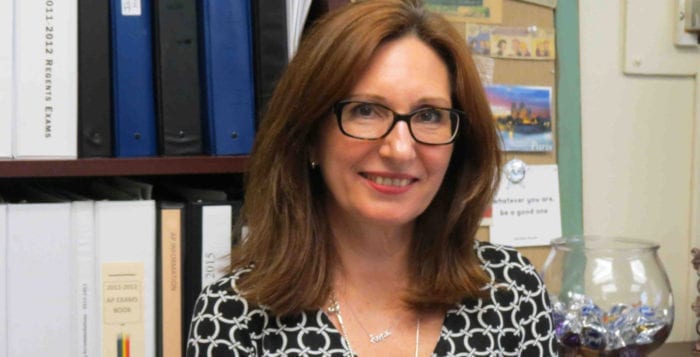


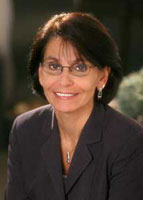 THE FACTS: I would like to help defray the cost of college for my grandson, Joe. My daughter and son-in-law are not in a position to pay full tuition, room and board. I don’t want them or Joe to borrow for his education.
THE FACTS: I would like to help defray the cost of college for my grandson, Joe. My daughter and son-in-law are not in a position to pay full tuition, room and board. I don’t want them or Joe to borrow for his education.


